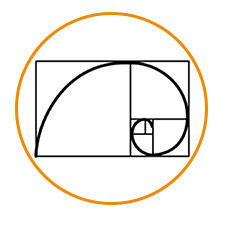Why the Fibonacci Betting System Doesn’t Work

The creation of betting systems has become almost a cottage industry for casino gamers, with plenty of people proclaiming that their own way of playing blackjack or roulette is the best way to bet on these storied games. However, due to the fact that most casino games are luck-based, the value of these strategies to players is up for debate. Many of them only work over extremely long periods, acting as more of a vacuum on your bankroll than a way of increasing your chances. Let’s be honest, anybody with a guaranteed way of beating the casino would probably keep it to themselves.
One of the biggest flaws associated with betting strategies is that many of them are incompatible with losing streaks. Some of the more audacious systems require playing through a run of bad results as though the famous gamblers’ fallacy (the belief that more losses increase the chance of a win) were just a legend told in hushed tones around the casino bar. Of course, it’s difficult to argue with the reality of a losing streak when you’ve already exhausted your bankroll.
Today, let’s take a look at one of the more popular of these betting systems, one that concerns itself with the mathematics of the Fibonacci sequence.

What is the Fibonacci Sequence?
Like Pi and Pythagoras’ obsession with triangles, the Fibonacci sequence is one of those aspects of mathematics that has almost reached household name status. In fact, the idea that people will put the Fibonacci sequence on top of anything (pictures of cats, dogs, bears, etc.) and call it good has become something of a meme in recent years. In its most common representation, the Fibonacci sequence is a shape that looks like a Nautilus shell, which follows the mathematical principles of the ‘golden spiral’.
Lost? All you need to know about the Fibonacci sequence is that it’s made up of numbers that are added together, beginning with 0 and 1:
- 0+1 = 1. Add the answer (1) to the sequence, giving 0, 1, 1. Now, we add the new lot of numbers together;
- 1+1 = 2. Add the answer (2) to the sequence, giving 0, 1, 1, 2. Now, we add the new lot of numbers together;
- 1+2 = 3. Add the answer (3) to the sequence, giving 0, 1, 1, 2, 3.
And so forth. The only thing you need to memorise to find the next number in the sequence is what the most recent two numbers add up to. Let’s look at the Fibonacci sequence in a much longer form, one that we hope you’ll never need when you’re using this particular betting system:
- 0, 1, 1, 2, 3, 5, 8, 13, 21, 34, 55, 89, 144, 233, 377, 610, 987, 1597, and 2584.
When represented as a drawing instead of in numbers, the Fibonacci sequence creates the ‘golden’ spiral we mentioned earlier. Why golden? It’s something of an idea for the growth of things and is visible in nature. Sunflowers, cauliflowers, the family tree of bees, DNA molecules, hurricanes, nautiluses, and even the human face (one nose, two eyes, three limb segments etc) follow the Fibonacci sequence. The song Lateralus by the progressive metal band Tool uses the Fibonacci sequence to order the number of syllables of its lyrics, too.
Why? Who knows.

The Fibonacci Betting System
Hopefully, by now, you’ll be able to see that the Fibonacci betting system follows the famous sequence in some way or another. If you’d like to use it in a casino game (it’s applicable to anything where bets are placed and won or lost), simply write it down and keep to the following rules:
- Bet one whole unit according to your position on the Fibonacci sequence, which is determined by;
- One step forward on a losing bet or;
- Two steps backwards on a winning bet.
You will begin on 1, which represents one whole unit at the first stage. If you lose, bet 1 again; if you lose, bet 2; if you lose, bet 3; if you lose, bet 5 … and so forth. Winning on 5 will take you two steps down the sequence, to 2 – and then 1. You can restart the sequence from this position, as it’s not possible to go any further back.

What’s Wrong with it?
The Fibonacci betting sequence is based upon chasing losses in even markets (even/odd, win/loss, black/red, etc.) until the player wins, gives up, or runs out of money. Once again, this process takes way too many cues from the gamblers’ fallacy. While everyday logic might dictate that a coin toss has to land on heads eventually, theoretically, it doesn’t. The only reliable aspect of a 50:50 chance is that you will get both outcomes eventually. Try it yourself. See what number you get to by assigning +1 to heads and -1 to tails and flipping the coin ten times. Is it zero?
The Fibonacci sequence is known as a negative progression, which means betting more (and more) when you’re losing. It’s not hard to see the problems with this kind of wagering and it’s widely criticised by gambling experts. If you have infinite time and an infinite bankroll, then the Fibonacci sequence is a sound way of betting but, for the average roulette player, having to stake £5 (on an initial stake of £1) on the fourth loss in a row isn’t anybody’s idea of a practical progression towards getting some sort of significant win.
Did You Know?
The Fibonacci sequence has a very long history, going back to the 13th century. However, Fibonacci, then known as Leonardo of Pisa, originally invented his famous concept to calculate the spread of rapid populations. Separate from Fibonacci, though, the number sequence of 0-1-1-2-3-5, etc. may actually have its roots in 450BC in India.
Source: casino.com
